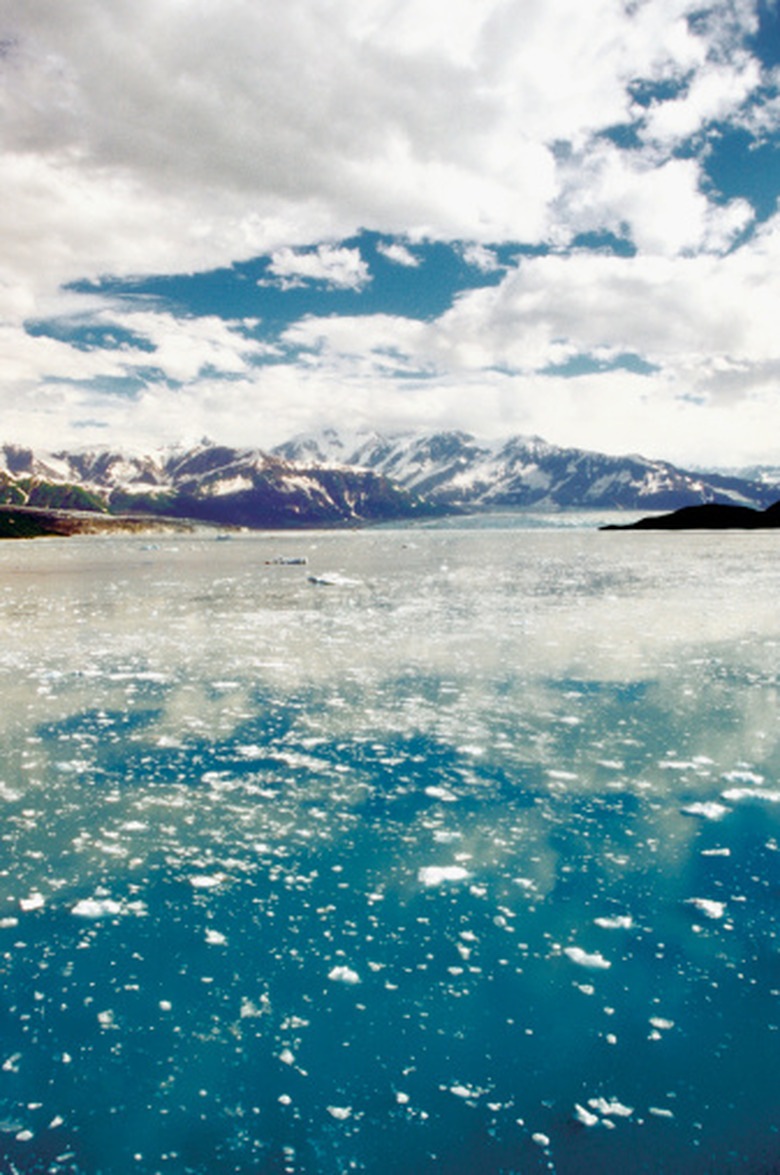Why Is The Water Cycle Important To An Ecosystem?
Water is a necessity for life. Living organisms comprise at least 70 percent of water. It is the only substance present on Earth and in the atmosphere in its three phases – solid, liquid and gaseous – at the same time. The water, or hydrological, cycle is the circulation of water as ice, liquid water and water vapor throughout the Earth and its atmosphere. Ecosystems are biological, or biotic, communities and the chemical and physical, or abiotic, processes that influence their structure. Ecosystem boundaries range from a coastline to a pond, a field to a forest, or different depths of water in the oceans.
Clouds
Clouds
The cycle starts as water evaporates from the surface of the ocean. Water vapor rises, cools and condenses into water droplets and ice particles that move over the Earth's surface. Clouds play a pivotal role in controlling the Earth's climate. They reflect incoming solar radiation back into space and exert a cooling effect on the Earth's surface. Clouds also trap outgoing radiation from the Earth and produce a warming effect on the Earth's surface.
Precipitation
Precipitation
Water falls back to the Earth as rain, hail or snow in the next stage of the cycle. On the ground, prevailing heat on the surface causes some of the water to evaporate again. Another part of the water penetrates surface soil and collects underground as groundwater that seeps into river systems and oceans, and emerges at the surface again as a spring. Remaining water, or runoff, flows into rivers, lakes and oceans where the cycle begins again.
Vegetation
Vegetation
Vegetation on the Earth's surface absorbs groundwater and nutrients through roots and evaporates it back into the atmosphere from its leaves. This is the process of transpiration that forms a further branch of the cycle. According to the U.S. Geological Survey, a large oak tree transpires 40,000 gallons of water per year, while a 1-acre corn field produces 3,000 to 4,000 gallons of water daily. This enables the vegetation to humidify the air and keep the water cycle moving in regions far away from oceans. Clearing away trees across large areas slows down rain, leading to drought and desert formation.
Oceans
Oceans
Oceans are the main liquid stage of the water cycle. They cover 70 percent of the Earth's surface, hold 96.5 percent of the world's water and are responsible for the creation of 85 percent of water vapor in the atmosphere. Oceans hold the world's largest ecosystems. These communities vary according to the depth of water, its temperature, salinity and availability of sunlight. Evaporation of pure water from the surface of the ocean leaves behind salts, which become concentrated in the water. Coral reefs grow in shallow warm waters while microorganisms and bottom feeders – flatfish and stingrays – live in the dark, cold and deep waters.
Icecaps
Icecaps
Icecaps and glaciers are the solid stage of the water cycle and store 68.7 percent of the world's fresh water. The Geological Survey estimates that if all the ice melted, sea levels would rise by 230 feet. Like clouds, icecaps reflect a part of the sun's radiation back to space and act as a cooling influence on the Earth's temperature. Icecaps are integral to thermohaline circulation, which is the process in which temperature and salinity differences in various parts of the oceans drive the ocean currents. If this circulation did not exist, the Earth's polar regions would become colder and the equatorial regions would become hotter. Their respective ecosystems would not survive.
Cite This Article
MLA
Kielmas, Maria. "Why Is The Water Cycle Important To An Ecosystem?" sciencing.com, https://www.sciencing.com/why-is-the-water-cycle-important-to-an-ecosystem-13660717/. 26 September 2017.
APA
Kielmas, Maria. (2017, September 26). Why Is The Water Cycle Important To An Ecosystem?. sciencing.com. Retrieved from https://www.sciencing.com/why-is-the-water-cycle-important-to-an-ecosystem-13660717/
Chicago
Kielmas, Maria. Why Is The Water Cycle Important To An Ecosystem? last modified March 24, 2022. https://www.sciencing.com/why-is-the-water-cycle-important-to-an-ecosystem-13660717/
